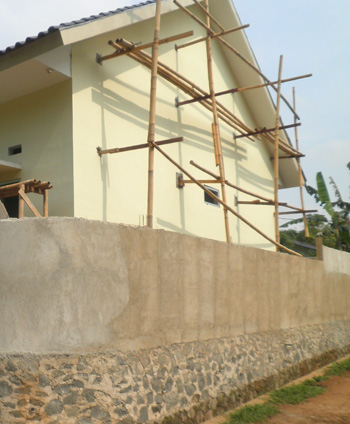In this series of articles Sundanese intellectuals reflect on the Cikeusik tragedy and see alarming realities behind a brutal killing
<br
Julian Millie
 |
The Ahmadiyah community is building new homes for the families of those killed at Cikeusik.Melissa Crouch |
The history of increasing difficulties facing the Indonesian Ahmadiyah Congregation (JAI) can be traced in the pages of Inside Indonesia. The origins of the Indonesian branch of this Muslim minority movement were explained by Munawar Ahmad in edition 89 (Jan-Mar 2007). The movement originated in late nineteenth century India (contemporary Pakistan), was first proselytised in the Netherlands Indies in the 1920s, and currently has around 500,000 Indonesian followers. One sub-group within Ahmadiyah attributes revelation to its founder Mirza Ghulam Ahmad (d. 1908), thereby taking a doctrinal position that has attracted disapproval from orthodox Sunni Muslims who argue that divine revelation ended with the Prophet Muhammad.
Disapproval towards Ahmadiyah has been expressed constantly in Indonesia since the group was established there, but threats and violence against the group’s members and infrastructure have increased alarmingly in recent years. In edition 85 (Jan-Mar 2005), Akh Muzakki described a number of such conflicts occurring in West Java, and also examined the role of the Indonesian Council of Scholars (MUI) in the violence. The MUI had released a fatwa asserting that Ahmadiyah’s teachings were not Islamic in 1980, at a time when the Suharto government granted no space for activist organisations











